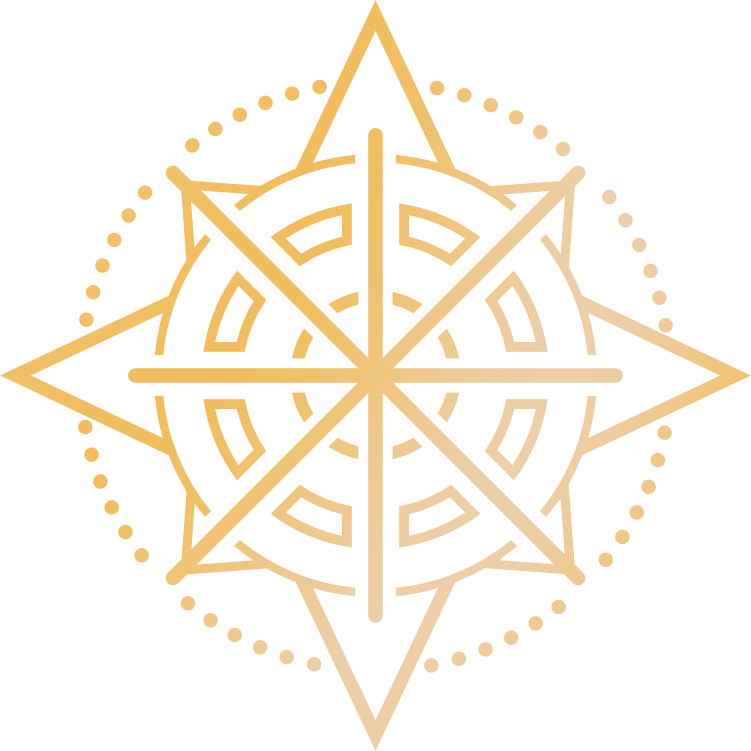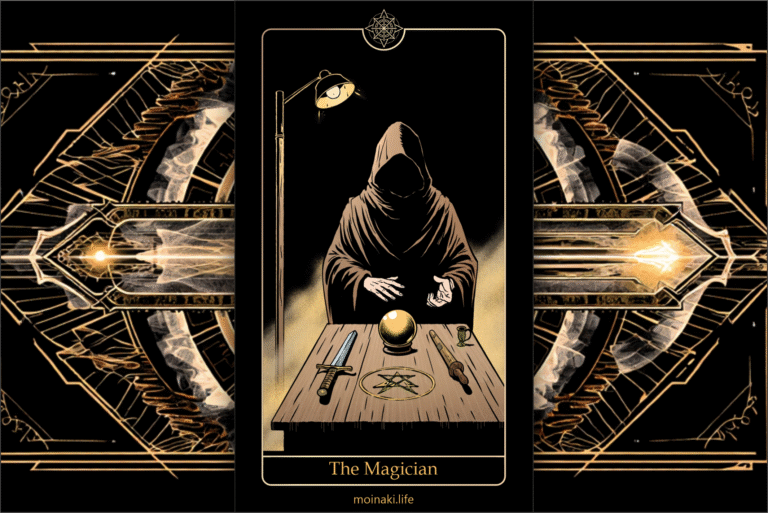The Moon
The Moon card in tarot often invites us to pause and reflect on what is hidden beneath the surface. Unlike cards that speak of clarity or action, The Moon is more about journeying inward and exploring the uncertainties, dreams, and sometimes illusions that shape our reality. For anyone standing at a crossroads—emotionally, professionally, or personally—The Moon offers both a challenge and an opportunity for growth.
The Context of The Moon Card
In the classic Rider-Waite deck, The Moon features a glowing moon in the night sky, a winding path, and animals flanking a pool of water. This imagery suggests a landscape of the unconscious, where things are not always what they seem. It’s a card that asks us to trust our intuition while acknowledging the presence of confusion or fear.
Traditionally, The Moon is associated with the unknown, illusions, dreams, and the deeper layers of the psyche. It’s a card of mystery, but also of profound self-discovery if we’re willing to look beyond surface appearances.
“The Moon does not simply illuminate; it also casts shadows. It shows us what we might otherwise choose to ignore.”
Main Meanings: Upright and Reversed
Upright Meaning
When The Moon appears upright, it often signals:
- Uncertainty or confusion: You may feel unsure about your direction, or sense that not everything is as it appears.
- Heightened intuition: Your gut feelings are strong, even if logic can’t explain them.
- Dreams and imagination: The subconscious is active, and your dreams or daydreams may hold messages or insights.
- Hidden truths: Something important may be concealed from your conscious mind, waiting to be discovered or understood.
Reversed Meaning
Reversed, The Moon’s energy shifts:
- Releasing fear: You may start to see through illusions or anxieties that previously clouded your judgment.
- Clarity after confusion: The fog is lifting, allowing for clearer thinking and decision-making.
- Ignoring intuition: Sometimes, this card reversed suggests you’re disconnecting from your inner voice, relying too much on external validation.
- Denial or escapism: There’s a risk of avoiding uncomfortable truths or numbing difficult emotions.
Psychological and Self-Development Perspective
The Moon is a powerful symbol for anyone navigating uncertainty or emotional overwhelm. In therapeutic terms, it represents the process of shadow work—exploring the parts of ourselves we usually keep hidden, such as fears, insecurities, or unprocessed memories.
When The Moon shows up, it’s a sign that your inner world deserves gentle attention. Are you avoiding certain emotions because they feel too intense? Do you find yourself overthinking or doubting your instincts? The Moon encourages you to notice these patterns without judgment.
“Listening to your intuition is not about magical thinking—it’s about tuning in to subtle cues your mind and body are giving you.”
In a work or career context, The Moon can highlight times when office politics, unclear expectations, or mixed messages are causing stress. It’s a nudge to pause and reflect before making big decisions, and to seek out missing information rather than acting on assumptions.
Common Emotional Themes of The Moon
- Anxiety or restlessness when facing the unknown
- Difficulty trusting yourself or others
- Feeling ‘stuck’ in old patterns or fears
- Longing for deeper meaning or understanding
How to Apply The Moon’s Lessons in Daily Life
Concrete Steps and Exercises
Facing the Moon’s energy can feel intimidating, but with a few mindful practices, you can use it as a catalyst for growth and self-awareness. Here are some practical ways to engage with The Moon’s wisdom:
1. Journal Your Dreams and Gut Feelings
- Keep a notebook by your bed and jot down any dreams, even fragments, as soon as you wake up.
- Throughout the day, note moments when you have a strong gut reaction—positive or negative.
- After a week, look for patterns. What are your dreams or instincts trying to tell you?
2. Practice Mindful Observation
- Set aside five minutes daily to sit quietly and observe your thoughts and feelings, without trying to change them.
- Notice what comes up—especially any recurring worries or fears. Label them gently (“this is anxiety,” “this is doubt”).
- Remind yourself that uncertainty is a normal part of being human.
3. Seek Out the Source of Confusion
- When you feel lost or unsure, ask yourself: What am I not seeing clearly?
- Talk through your thoughts with a trusted friend, mentor, or therapist to gain new perspectives.
- Avoid making big decisions until the ‘fog’ lifts—sometimes, waiting brings more clarity than rushing.
4. Use Creative Expression
- Try drawing, painting, or writing poetry as a way to access your subconscious.
- Don’t judge the results—this is about exploration, not perfection.
- Afterwards, reflect on any symbols, colors, or themes that repeat. What might they mean for you?
5. Cultivate Self-Compassion
- Remind yourself that it’s okay to have doubts and fears. Everyone does.
- Practice self-soothing techniques, such as gentle breathing or positive self-talk, when you’re feeling overwhelmed.
- Affirm: “I can move through uncertainty with patience and kindness.”
Bringing It All Together
The Moon card ultimately invites us to honor our own complexity. Life isn’t always clear or predictable, but that doesn’t mean we’re lost. The Moon’s gentle light encourages us to slow down, explore our inner world, and trust that insight will come with time.
“When the path ahead is unclear, the most courageous thing you can do is listen inward and take one step at a time.”
Remember, The Moon isn’t asking you to have all the answers. Instead, it’s inviting you to get comfortable with not knowing, to develop trust in your own resilience, and to use periods of confusion as opportunities for self-reflection and deeper understanding.
Tarot is not fortune-telling — it’s a mirror for reflection and growth.

